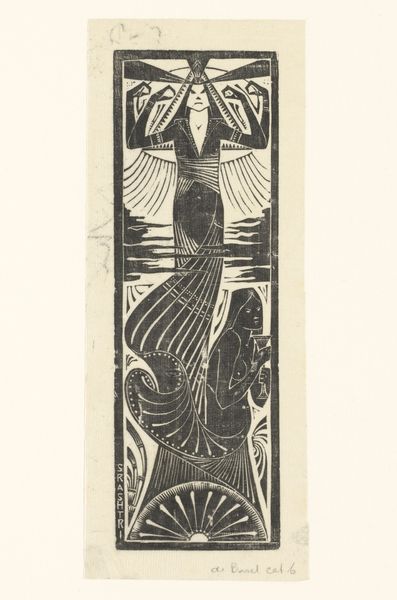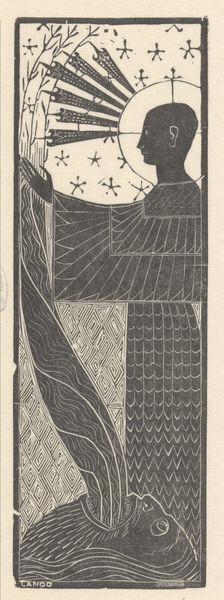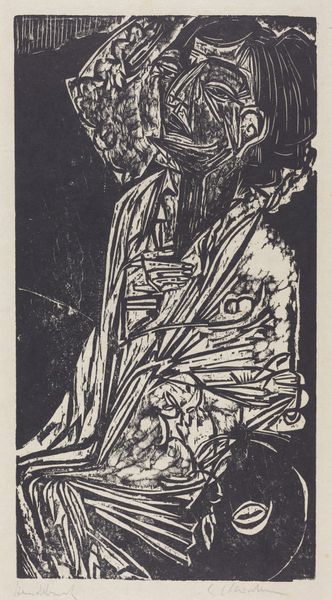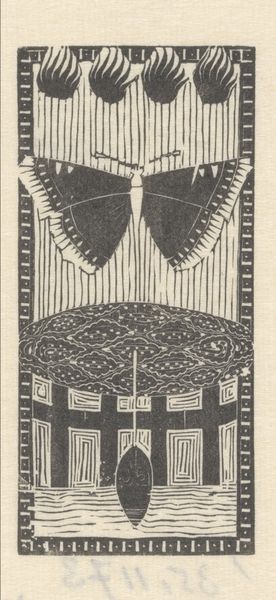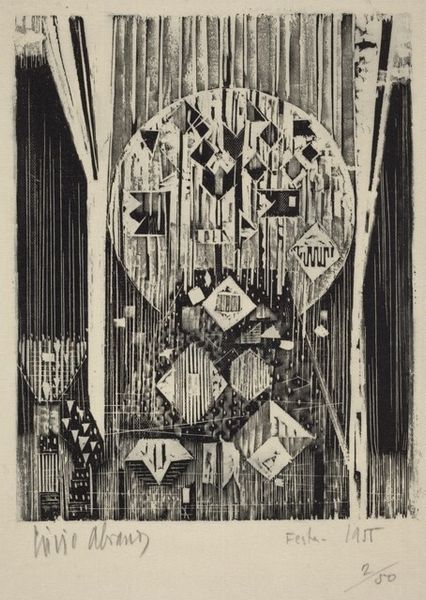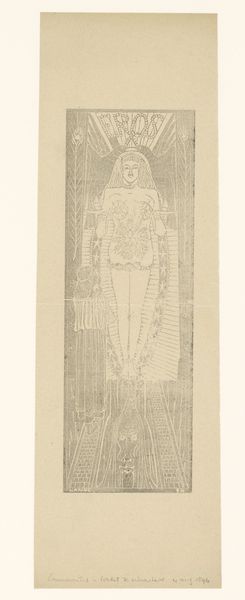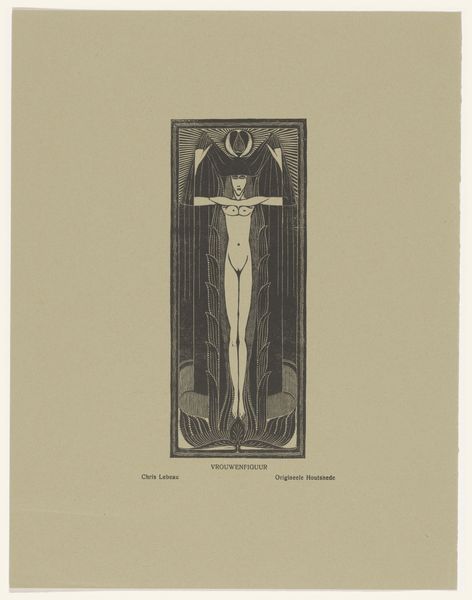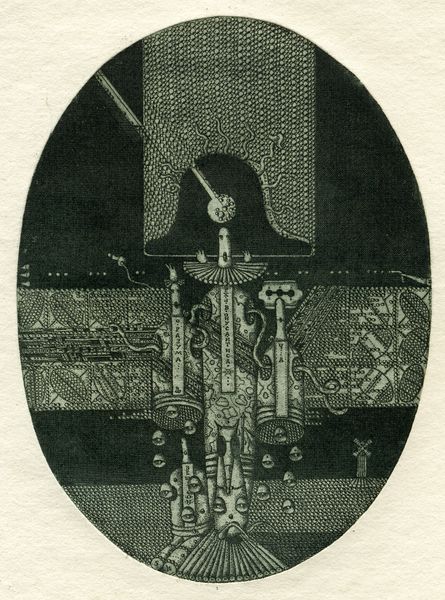
print, woodcut
#
art-nouveau
# print
#
flower
#
geometric
#
woodcut
#
abstraction
#
line
#
symbolism
Dimensions: height 210 mm, width 134 mm
Copyright: Rijks Museum: Open Domain
Editor: This woodcut, "Bloemgezicht," by Mathieu Lauweriks, created sometime between 1894 and 1935, feels almost like a face hidden within a floral arrangement. What do you see in this piece? Curator: Indeed, it is an uncanny convergence of plant and person. The rhythmic lines of the woodcut draw my eye. These linear elements function as visual runes, emblems, like something we would find on a talisman. Look at how the floral elements morph into facial features – roses become a stylized headdress and the petals create almost haunting eyes. How does the visual echo resonate with you? Editor: It gives the piece a dreamlike quality. It reminds me of Art Nouveau, which I know had a fascination with symbols from nature. Curator: Exactly. Consider the context. The period was steeped in the symbolism. Art Nouveau and movements of the late 19th and early 20th centuries actively sought to re-enchant the world through such imagery. These were artists tapping into primal, collective understandings. The image transcends mere depiction. Notice how it speaks to more fundamental questions about beauty and human identity intertwined? Editor: Now that you mention it, the flower’s structured geometry seems to hint at hidden structures beneath nature's surface, like a deeper order. Curator: Precisely. Do you agree that the linear treatment is so important? Editor: Definitely! It reinforces the design qualities. Seeing those stylized lines I start to question the artist's intent behind that level of detail, now. Curator: We are decoding signs – connecting past and present. It deepens our interaction with it, don’t you think?
Comments
No comments
Be the first to comment and join the conversation on the ultimate creative platform.
